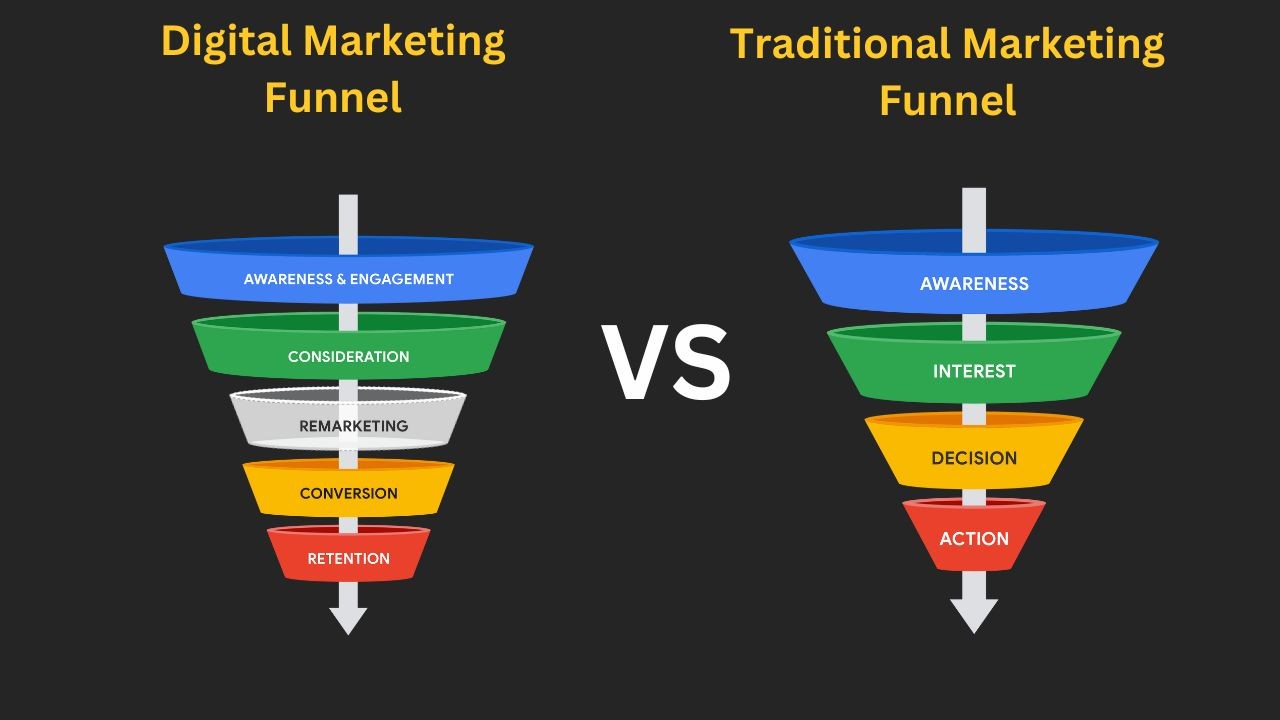The digital marketing funnel describes the customer’s journey from just knowing about a product or service to making the actual purchase. It is visualized as a funnel to signify that the number of potential customers often reduces as they move from one stage to another.
In the world of Internet marketing, the marketing funnel is often split into three broad stages: the top of the funnel, middle of the funnel, and the bottom of the funnel. Each stage requires a different approach, as they all have different objectives.
The goal at the top of the funnel is to spread awareness. Prospects at this stage are just becoming aware of their problem and the potential solutions. The middle of the funnel is where the consideration happens. This is when a prospect is evaluating different services or products that can solve their problem.
The bottom of the funnel is where the decision happens. Prospects at this stage are ready to make a move – they’re just deciding where to make their purchase. This is the make-or-break stage for businesses.
What is the Bottom of the Funnel?
The bottom of the funnel, or BOFU, refers to the stage where the prospect is about to become a customer. They’ve learned about the business, considered its offerings, and are now ready to take action. It is at this point that the prospect is closest to making a purchase.
The potential customer at the bottom of the funnel is not just a lead; they’re a highly qualified lead who has both the interest and the capability to purchase. They’re actively looking for a reason to choose your business over the competition.
Businesses need to make it as easy as possible for these prospects to make their purchase decision at this stage. They must provide everything needed to break any potential barriers that could prevent a conversion.
Marketing efforts must be geared towards convincing these potential customers to make the purchase. The correct mix of the marketing strategy here can mean the difference between closing a sale and losing a potential customer.
Importance of the Bottom of the Funnel in the Sales Process
The bottom of the funnel is the point where all your marketing efforts either pay off or fall flat. Customers at this stage are ready to take action, and it’s up to the brand to give them that final push.
Without a sharp focus on the bottom of the funnel, businesses risk losing customers who are almost ready to convert, making all the earlier marketing efforts futile. Effective bottom-of-funnel marketing helps convert leads into customers, thus directly impacting the company’s bottom line.
This is also the point where brands can establish lasting customer relationships. Convincing a customer to choose your brand means they are likely to buy from your brand again, becoming repeat customers. A successful bottom-of-funnel strategy not only increases the conversion rate but also helps boost customer loyalty.
It’s important to note that marketing efforts should not stop once a lead converts into a customer. Post-purchase engagement strategies should then kick in to encourage customer loyalty and repeat purchases, playing their part in maximizing the overall customer lifetime value (CLV).
Strategies for Engaging Prospects at the Bottom of the Funnel
Proper engagement is paramount at the bottom of the funnel. These prospects have shown significant interest in your offerings, and it’s time to seal the deal. But, how can you do that?
One popular strategy is using targeted content. Testimonials, product demonstrations, case studies, and comparison reviews can prove to be highly effective in showcasing the benefits of your product or service over competing offers.
Another strategy is personalized communication with the prospect. This could be through emails, phone calls, or face-to-face meetings. The idea is to make the potential customer feel valued and assure them that choosing your brand is the best decision.
Brands can also leverage discounts and promotional offers meant exclusively for prospects at the bottom of the funnel. These can serve as a strong motivator, pushing them towards the purchase decision.
Altogether, understanding and leveraging the bottom of the funnel can significantly increase conversion rates and grow your business’s bottom line. However, it’s essential to keep in mind that each customer’s journey is unique, and therefore the approach needs to be tailored accordingly.
The digital marketing world is filled with numerous terminologies that can be difficult to decipher if you’re not deeply involved. One such term is ‘the bottom of the funnel.’ In this article, we shed light on its importance and why businesses should pay attention to it. Keep reading to find the answers.
